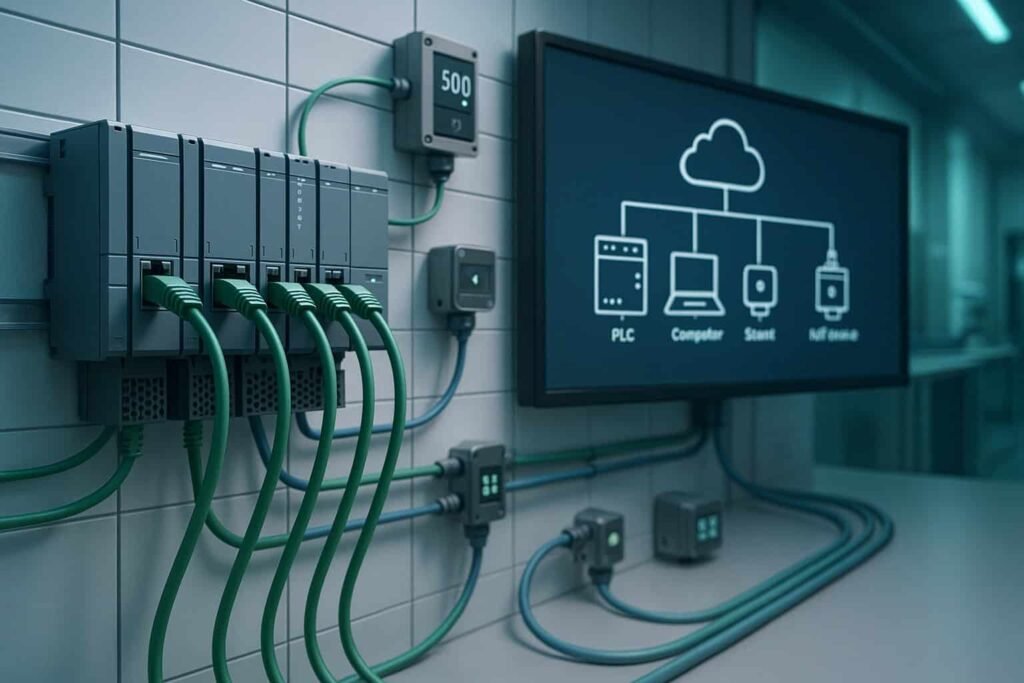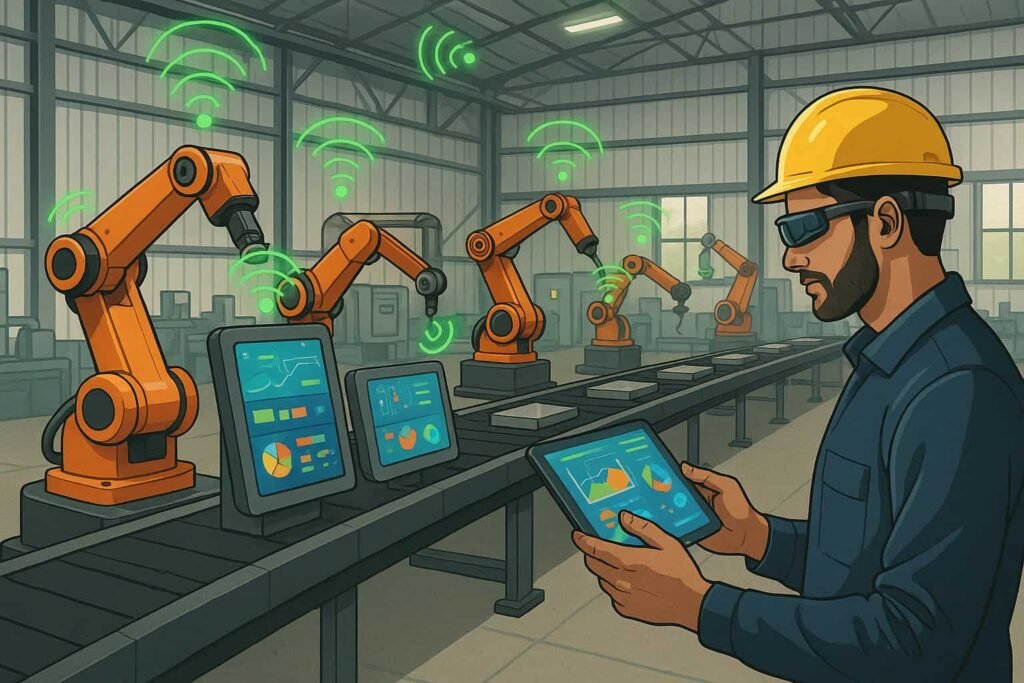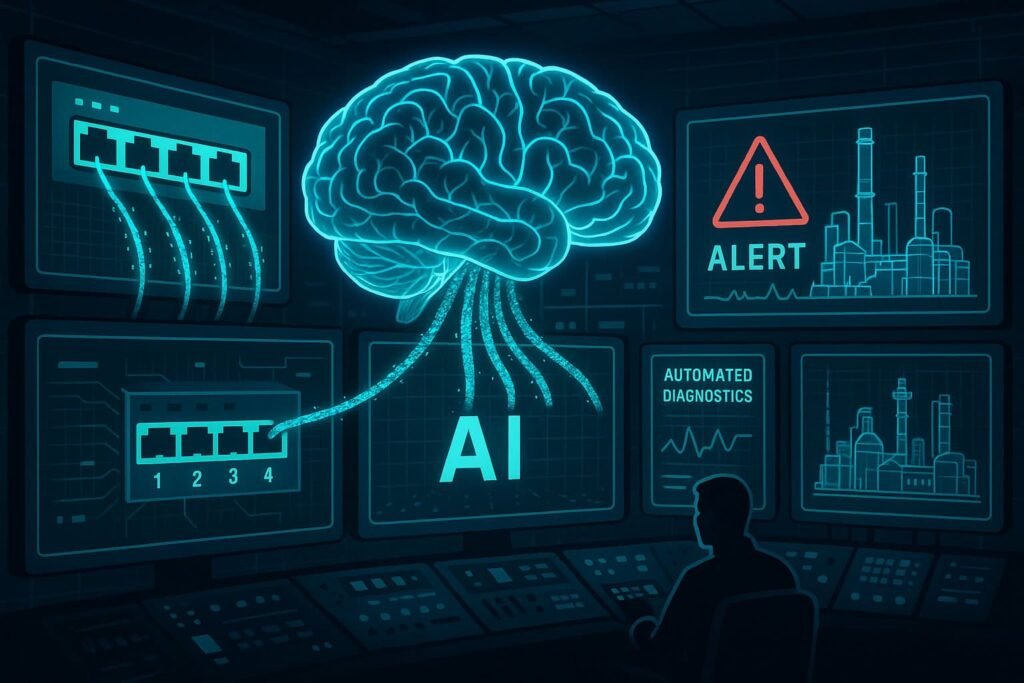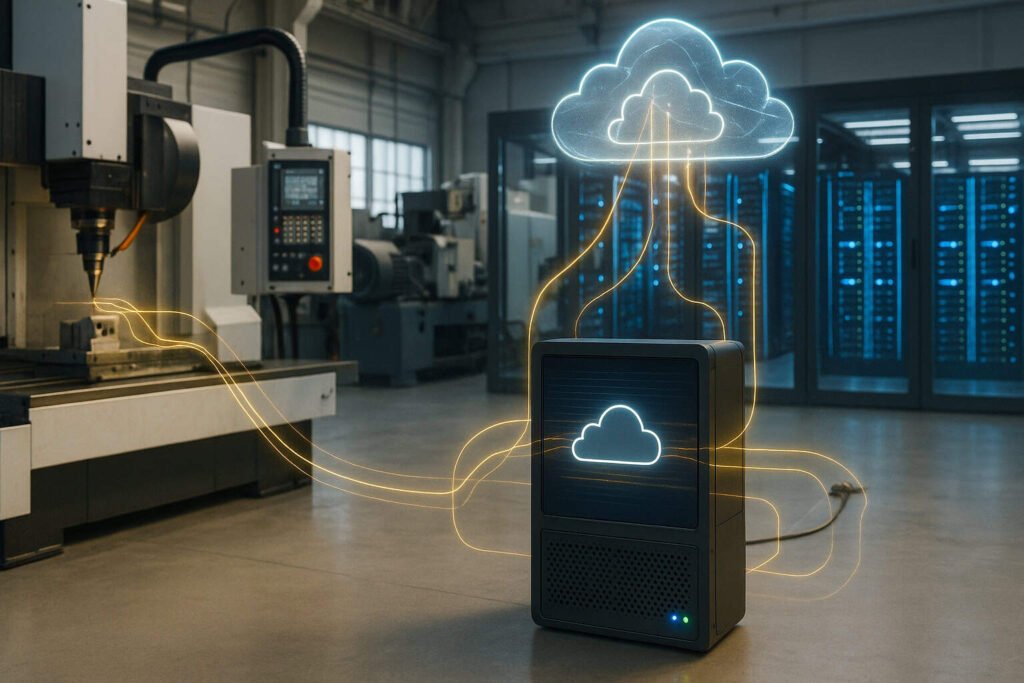As India embraces the fourth industrial revolution, the way factories and infrastructure communicate is undergoing a significant transformation.
The surge in smart manufacturing, combined with a national push toward digitalization. It is shaping the future of industrial connectivity.
In 2025, industrial networking is no longer just about linking machines, it’s about building intelligent, secure, and scalable ecosystems.
What are the top 5 Industrial Networking Trends in India in 2025?
In this article, we will explore the key industrial networking trends in India that are redefining efficiency in 2025, reliability, and innovation across the sector.

Industrial Ethernet Is Taking Over
If you will deeply analyse the trends in India, you will notice several changes.
One of the most notable trends in 2025 is the dominance of industrial Ethernet over traditional fieldbus systems.
According to HMS Networks, Ethernet-based networks now account for 76% of all newly installed industrial nodes globally. Protocols like PROFINET, EtherNet/IP, and EtherCAT are leading this growth.
In India, this shift is even more significant. Industries are prioritizing scalable and high-speed communication networks to support automation and real-time data exchange.

Legacy systems like Fieldbus, which once formed the backbone of factory communication, are seeing rapid decline.
As industries in India become more digitally mature, they are adopting Ethernet for its superior bandwidth.
Its ease of integration with IT systems & networking devices and compatibility with Industrial IoT (IIoT) applications further support this transition.
This move is not just a technical upgrade, it’s a strategic decision to stay competitive in a fast-evolving global market.
The Rise of Smart Manufacturing
India’s industrial sector is shifting towards smart manufacturing. This model relies heavily on connected systems and data-driven operations.
According to Deloitte, over 90% of manufacturers now consider smart manufacturing essential to maintaining their market position.
This involves the integration of sensors, automation, and AI. It also includes network infrastructure that enables machines and systems to communicate and make decisions in real time.

In this environment, networking becomes the backbone of operations. Industrial switches and routers are no longer passive conduits; they play an active role in managing workloads, securing data, and enabling remote access.
This is especially critical in sectors like automotive, chemicals, and pharmaceuticals, where downtime and data loss can have serious consequences.
AIOps and Intelligent Network Management
Artificial Intelligence for IT Operations (AIOps) is becoming a core part of network management strategies in 2025.
As Indian factories become more connected, they are also more complex. Managing thousands of devices, each transmitting data, requires more than manual monitoring.
AIOps tools use machine learning to predict failures, detect anomalies, and automate responses—making industrial networks smarter and more resilient.

In India, AIOps adoption is being driven by the availability of AI infrastructure and government initiatives supporting tech innovation.
With AI now integrated into network switches and monitoring tools, industries can move from reactive maintenance to predictive analytics, reducing downtime and improving productivity.
Cloud, Edge, and the Growth of Data Centers
To support next-gen industrial applications, Indian companies are investing in cloud and edge computing.
These architectures allow real-time data processing closer to the source while maintaining centralized control via the cloud.
In 2025, the edge is becoming a critical element in industrial networking, especially in remote locations where connectivity to cloud data centers is limited or latency-sensitive.

India’s rise as a data center hub also supports this trend. With new hyperscale data centers emerging across the country, industries now have access to high-speed, low-latency connections that enable everything from digital twins to augmented reality for maintenance and training.
This evolution is reshaping how industrial networks are designed—favoring hybrid and edge-first models.
The Push for Cybersecurity in Connected Systems
As connectivity increases, so do the risks. Industrial networks are prime targets for cyberattacks, particularly in critical sectors like energy, manufacturing, and transportation.
In 2025, cybersecurity is no longer an afterthought—it is a foundational element of industrial networking.
India is taking major steps to improve cybersecurity readiness, with increasing alignment to global standards like IEC 62443.
Industrial switches now come equipped with built-in firewalls, access controls, and encrypted communication protocols.
Additionally, AI-driven security tools are helping identify threats before they cause disruptions.
The integration of cybersecurity with network infrastructure is one of the most important industrial networking trends this year.
Workforce Evolution and Reskilling
As networking technologies evolve, so must the workforce. India’s tech industry is projected to add over 150,000 skilled professionals in 2025, many of whom will work on networking, cybersecurity, and IIoT integration.
Organizations are realizing that digital transformation isn’t just about buying the right equipment—it’s about having the right people to manage, maintain, and optimize it.
Training programs focused on industrial protocols, network design, AI integration, and data security are in high demand.
Companies that invest in upskilling their teams will be better positioned to leverage the full potential of their network infrastructure.
Conclusion-
The industrial networking trends of 2025 highlight a transformative moment for India’s industrial sector.
From the rise of Ethernet and AI-powered management to the adoption of cloud-edge models and strengthened cybersecurity, these shifts are redefining how industries operate.
As India pushes toward becoming a global manufacturing leader, investing in future-ready network infrastructure will be key to driving efficiency, resilience, and innovation.
By embracing these trends today, businesses not only improve current operations but also build a strong foundation for the digital factories of tomorrow.
